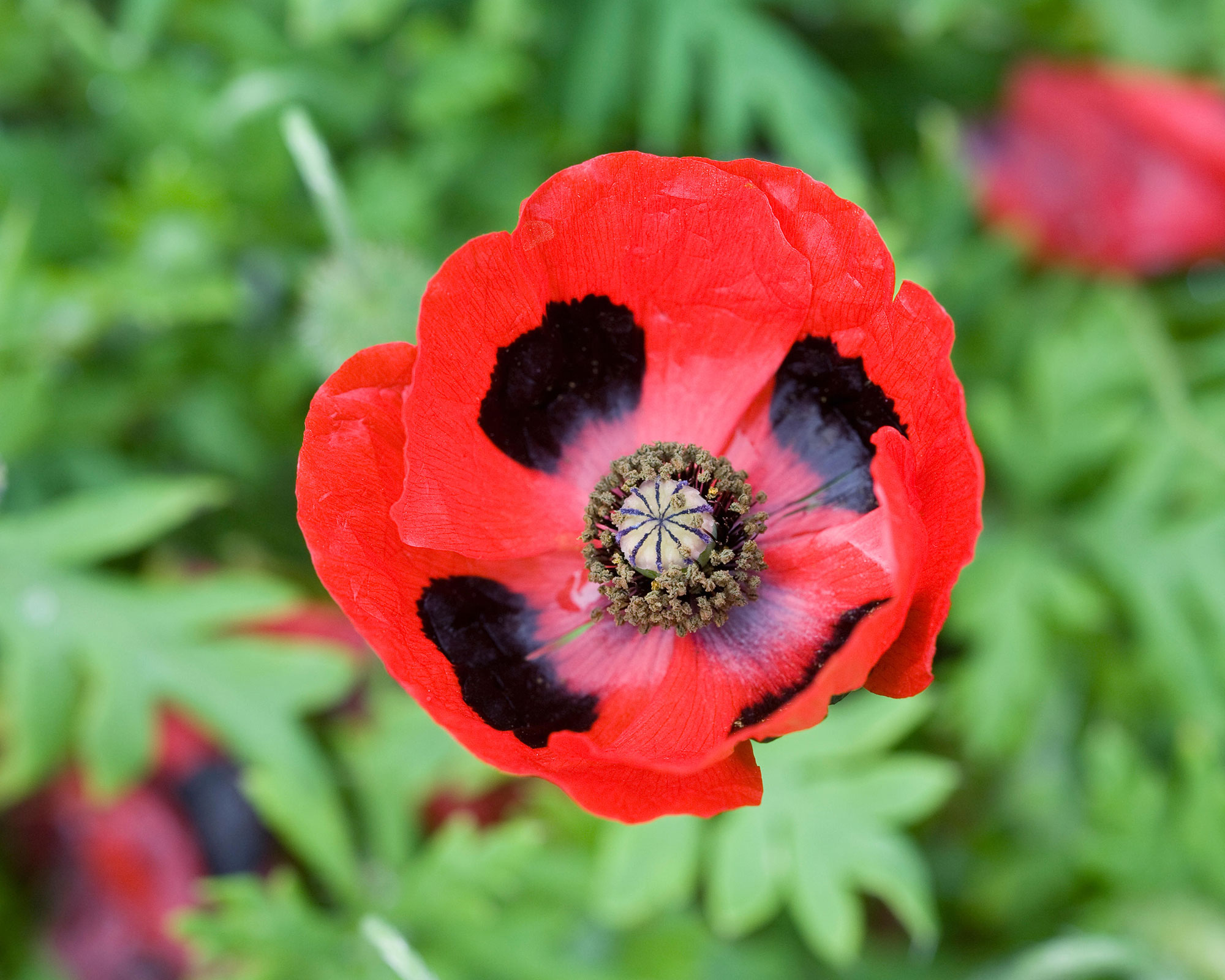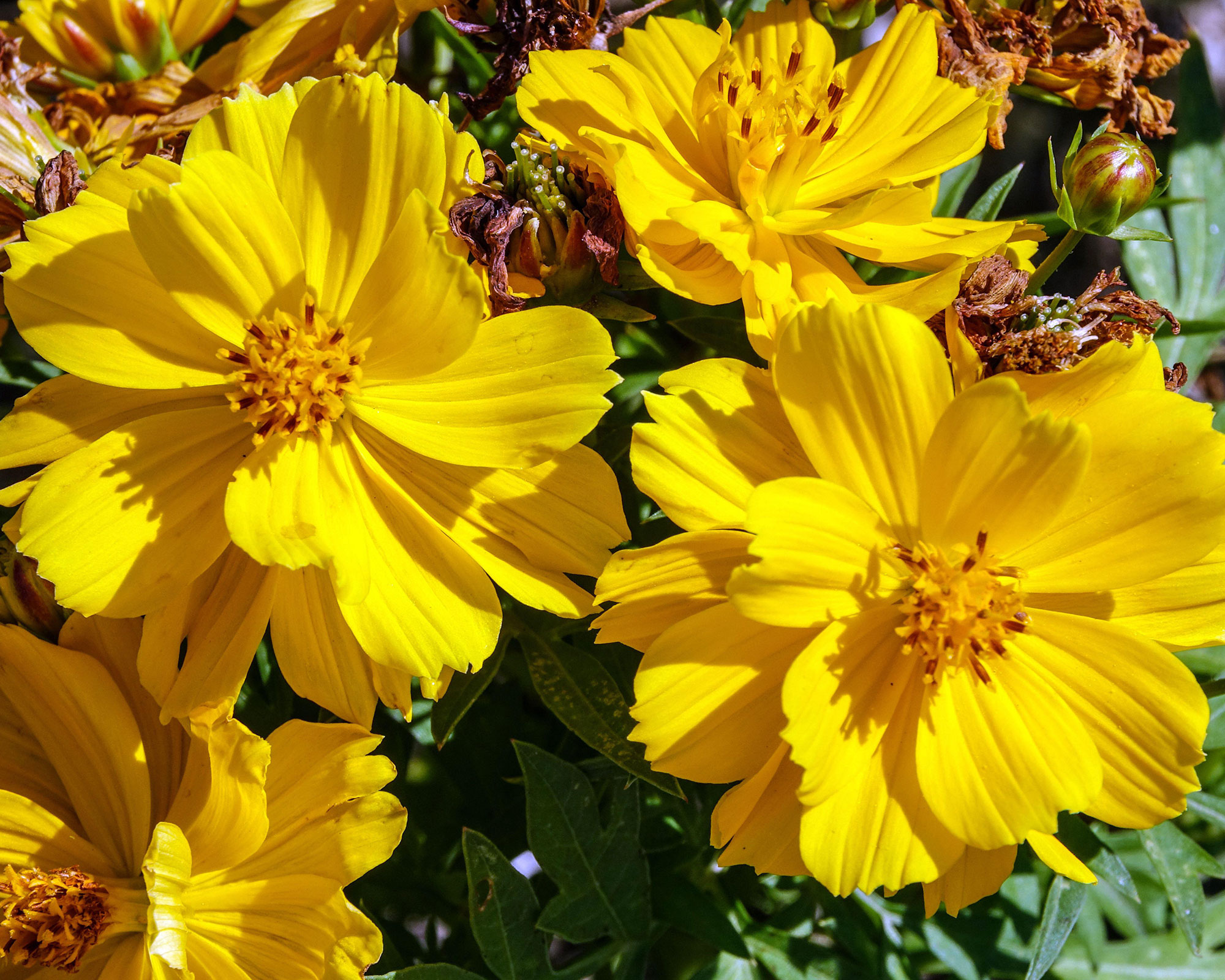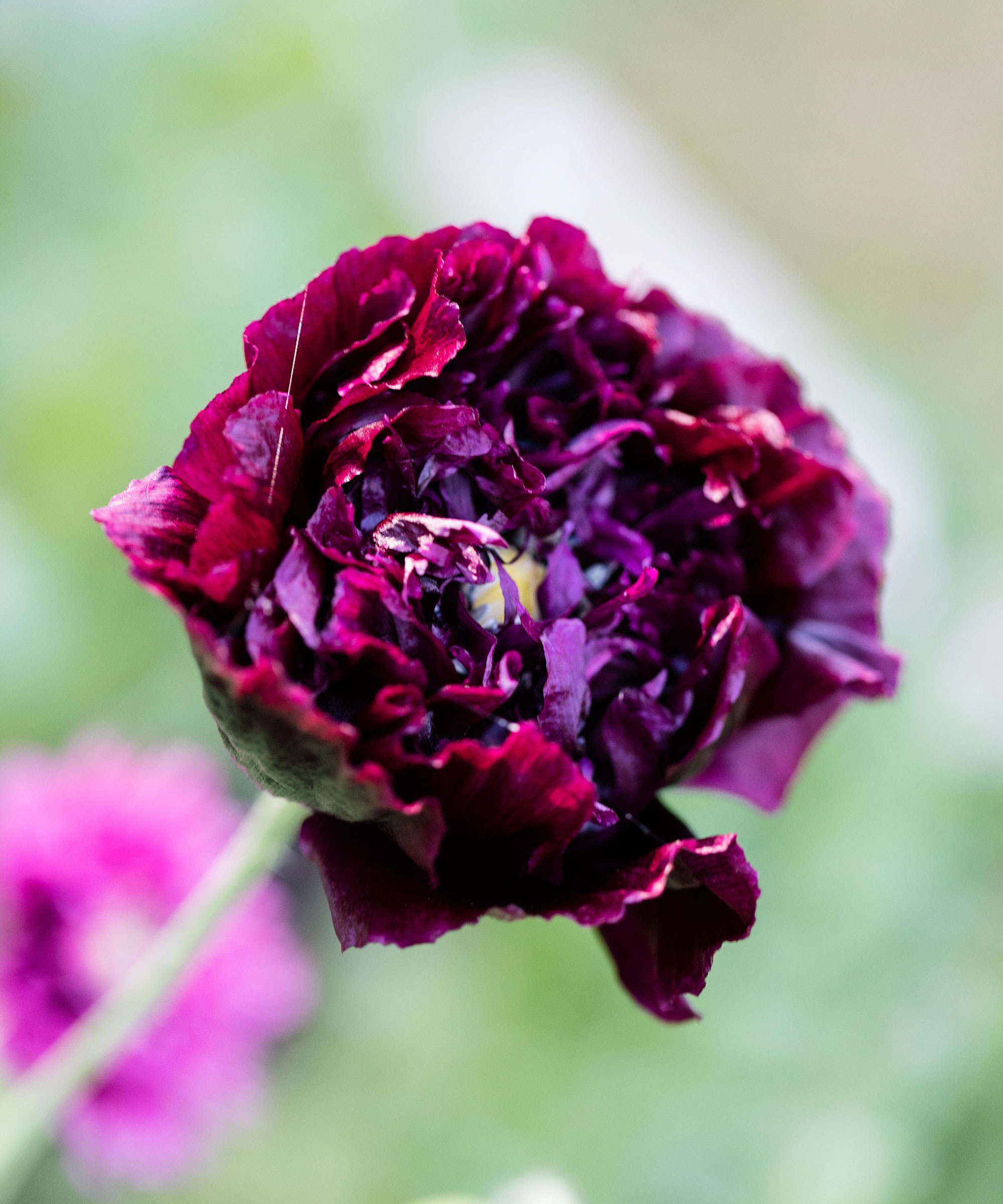Best annual flowers and plants: 16 picks for bold summer color
Sow bold, bright annual flowers in your garden for a riot of vivid color throughout the summer months


The best annual flowers and plants are easy to grow, cheap, and long-flowering, and the brightly colored forms fill the garden with cheer. The likes of cornflower, cosmos, zinnia, snapdragon, and calendula are available in vibrant paintbox shades of magenta, scarlet, orange, and cobalt, which brighten bare patches in borders from mid summer into fall.
At Great Dixter in East Sussex, UK, which is famed for its use of striking color, poppies are one of the annuals that takes center stage. The Ferrari-red Ladybird poppy is shown off by being grown beside white sanguisorba, while the tangerine blooms of California poppy sizzle alongside pink clarkia. Also intensely orange, the Mexican sunflower (Tithonia) is offset by lemon-yellow crocosmia. At Dixter, these maximum color annuals are used as bedding to fill gaps in the flower bed ideas, as well as between shrubs and perennials.
‘The bolder, brighter color flowers are always a joy to grow,’ say florists Caroline Harding and Kate Dalton, who grow their own flowers at the Sussex Cutting Garden. ‘The paler blooms, especially whites, get very bruised and damaged by summer rain, but the bolder colors seem to withstand a lot more inclement weather.’
Sow annuals to enjoy their flower power and color throughout the summer months, both in the garden and as fresh flowers indoors.
16 annual flowers and plants for blazing color in the garden
Enjoy months of stunning blooms with our selection of the best brightly colored annual flowers and plants for your plot.
1. Papaver commutatum ‘Ladybird’ AGM

- Hardiness: All zones
- Height: 18in (45cm)
This superb poppy has glossy scarlet petals with black blotches, like a ladybird, in summer and early autumn. It's a great plant for beginners so it's an easy one to grow with children.
Direct sow in mid to late spring in very well-drained soil in sheltered full sun. At Great Dixter, it is beautifully paired with white flowers, such as Sanguisorba tenuifolia ‘Alba’.
2. Linum grandiflorum var rubrum

- Hardiness: All zones
- Height: 1-1.5ft (30-45cm)
This easy-to-grow flax has glorious bright-crimson flowers with a satin sheen, above delicate green foliage, throughout summer and into autumn.
Direct sow this hardy annual in spring in light, well-drained soil in full sun. Fantastic in an annual meadow sowing or dotted through a garden border where there are gaps.
An excellent planting partner is Cerinthe major 'Purpurascens'.
3. Antirrhinum majus 'Liberty Classic Crimson’

- Hardiness: All zones
- Height: 2ft (60cm)
This easy-to-grow snapdragon is a wonderfully decadent shade of velvet crimson. It makes a grand statement in a border and it's a brilliant bee friendly plant to lure pollinating insects. .
Sow under cover in early spring or sow direct in late spring, in retentive, well-drained soil in sheltered sun. It is a great cut flower, but make sure you grow through netting or stake it to guarantee upright flowers.
4. Eschscholzia californica

- Hardiness: All zones
- Height: 1-1.5ft (30-45cm)
From early summer to early fall, the California poppy produces bright-apricot flowers above fine grey-green foliage and looks wonderful growing through small stones in a gravel garden.
Sow direct in very well-drained soil in full sun in mid to late spring. It self-sows; and in some regions of the US, can be considered an invasive plant. Deadhead to prevent self-seeding, if need be.
5. Tithonia rotundifolia ‘Torch’

- Hardiness: All zones
- Height: 5ft (1.5m)
The Mexican sunflower is a butterfly magnet that provides bold color late in the season, with tangerine daisies atop tall stems from mid summer to mid fall.
Sow under cover in early spring, sow direct in late spring, or buy as bedding plants. It may require staking and protection from slugs and likes well-drained, retentive soil in full sun.
For a lovely planting scheme, consider planting it alongside Helianthus annuus ‘Claret’ with its rich wine-red flowers.
We've got plenty more tips on how to grow a butterfly garden in our dedicated guide.
6. Tropaeolum majus ‘Empress of India’

- Hardiness: All zones
- Height: 1ft (30cm)
This lovely long-flowering nasturtium has exotic, vibrant orange-red blooms above dark-green leaves, and looks fabulous when it is allowed to trail.
An easy, cheap way to create a gorgeous display in sun is to sow ‘Empress of India’ direct into your hanging basket ideas outside in late spring: it will be a fountain of fiery flowers all summer.
Team it with the pretty white and yellow flowers of Limnanthes douglasii AGM.
7. Cosmos sulphureus 'Cosmic Yellow' (Cosmic Series)

- Hardiness: All zones
- Height: 1ft (30cm)
Gorgeous geum-like semi-double yellow flowers blaze like sunshine in the border for months. They make one of the best cutting garden flowers if you want to grow blooms to cut for the vase.
Sow under cover in early spring or sow direct after the risk of frost has passed in mid spring or early summer. Only cover with a thin sprinkle of soil and don’t overwater the seedlings.
Eschscholzia californica ‘Thai Silk Pink Champagne' is a good planting partner, or mix it with other types of cosmos for a pretty planting scheme.
8. Ipomoea lobata AGM

- Hardiness: All zones
- Height: 3-12ft (1-4m)
From mid summer to mid fall, the Spanish flag wows with spikes of yellow and red exotic blooms that resemble flames. In the US, the flowers attract hummingbirds.
In cool climates, it is grown as an annual climber. Sow under cover in early to mid spring, direct sow in late spring, or buy ready-grown as a bedding climber. Happy in well-drained, poor soil in full sun.
9. Thunbergia alata

- Hardiness: All zones
- Height: 6ft (1.8m)
In cool regions, black-eyed Susan is usually grown as an annual climbing plant. The rich-gold flowers have dark-chocolate centers and appear amid coarse heart-shaped leaves.
Buy ready-grown seedlings and plant out in late spring or early summer in well-drained soil in sheltered sun. Alternatively, it can be grown from seed in fall or winter.
Looks good when combined with the warm hues of climber Thunbergia alata ‘African Sunset’.
10. Cosmos bipinnatus ‘Double Click Cranberries’

- Hardiness: All zones
- Height: 3ft (90cm)
‘We love the delicate flowerhead of this cosmos, as well as its stunning color that complements all other blooms in a jug,’ say floristry farmers Kate and Caroline at the Sussex Cutting Garden.
Sow under cover in early spring or sow direct outside after risk of frost has passed; alternatively, buy as bedding plants. Cosmos like retentive, well-drained soil in full sun.
Mix with the equally attractive dark tones of Scabiosa atropurpurea ‘Chat Noir’ for a dramatic planting scheme.
11. Zinnia elegans ‘Purple Prince’ AGM

- Hardiness: All zones
- Height: 3ft (90cm)
Although zinnias fell out of fashion, they are a growing garden trend, and this is one of the best, with purple-pink blooms that can be 4in (10cm) wide.
Sow direct after risk of frost has passed, in well-drained, fertile soil in sheltered sun. They dislike disturbance, so weed around them gently. Team with the popular Cosmos bipinnatus ‘Purity’.
12. Malope trifida ‘Vulcan'

- Hardiness: All zones
- Height: 4ft (1.2m)
The magenta flowers of this cottage garden plant dazzle throughout summer and attract bees. It also makes a great cut flower, pairing well with lime, orange, or blue.
Sow under cover in early to mid spring or sow direct in late spring, in retentive, well-drained soil in full sun. Being a cut-and-come-again variety, it will flower for longer if regularly cut for the vase.
13. Lathyrus odoratus ‘Cupani’

- Hardiness: All zones
- Height: 6ft (1.8m)
Said to be identical to the original Sicilian wild sweet pea, ‘Cupani’ produces deliciously scented maroon and violet flowers all summer, if regularly picked.
Sow this annual climber under cover in spring in grow tubes (or toilet roll inners) or sow direct in rich, retentive, well-drained soil in sun, and protect from slugs and mice.
14. Centaurea cyanus ‘Blue Boy’

- Hardiness: All zones
- Height: 3ft (90cm)
You can never grow enough cornflowers! An excellent plant for pollinators, the charming lapis-blue blooms feed bees and other insects for months, if stems are regularly cut for the vase.
Sow this hardy annual direct in spring, in well-drained soil in full sun. For taller plants, sow under cover in fall. Cornflowers can be grown through netting for support.
15. Papaver somniferum (Paeoniiflorum Group) 'Black Paeony’

This smouldering poppy has claret purple flowers above blue-grey foliage, followed by pepper-pot seedheads.
Opium poppies are easy to sow direct, in very well-drained soil (that is not too fertile) in full sun. It will self-sow, so deadhead if you don’t want more poppies next year.
Try teaming it with Nigella papillosa ‘African Bride’.
16. Salvia viridis ‘Blue Monday’

- Hardiness: All zones
- Height: 20in (50cm)
An annual clary salvia with fabulous spikes of indigo-blue flower bracts atop bushy, aromatic, hairy foliage, during summer and early autumn.
Direct sow this hardy annual in spring or early summer in well-drained soil in sheltered full sun. Keep cutting it for the vase or deadhead to prevent self-seeding.
What's the best way to grow annual flowers?
The main way to grow annual flowers is to use them to fill gaps in garden borders, so there is plenty of interest in your garden color scheme over the summer months.
Another popular way to grow annuals is to mix them together to create a mini ‘meadow’ – as well as producing quick height and color in a bare, sunny patch of ground, it provides a huge amount of nectar for wildlife.
Since many annuals are grown as cut flowers, they can also be grown in rows of color in the vegetable patch or kitchen garden, creating a rainbow effect. Having a cut-and-come-again habit, most annuals (including cornflowers and cosmos) will bloom non-stop if regularly harvested for the vase.
‘We would recommend cutting annual flowers every few days, to ensure a continuous supply,’ advise florists Caroline Harding and Kate Dalton from Sussex Cutting Garden, ‘otherwise the plant will run to seed. We cut them every few days in summer, and we even dry many varieties for the winter months when we don't have any flowers growing – they make a great edition to Christmas wreaths, for example.’


The garden was always a big part of Holly's life growing up, as was the surrounding New Forest where she lived. Her appreciation for the great outdoors has only grown since then. She's been an allotment keeper, a professional gardener, and a botanical illustrator – plants are her passion.
